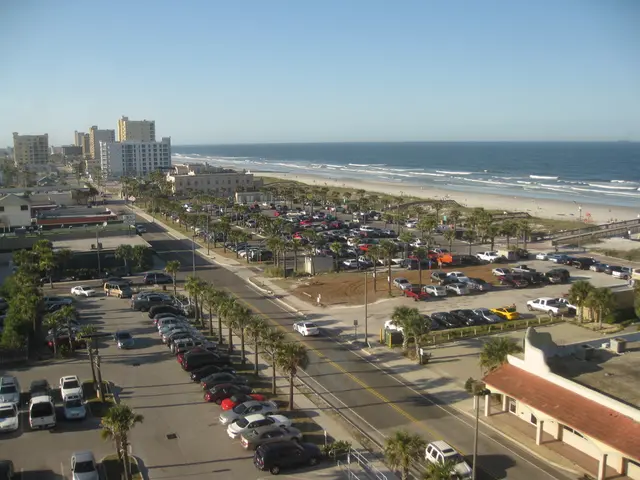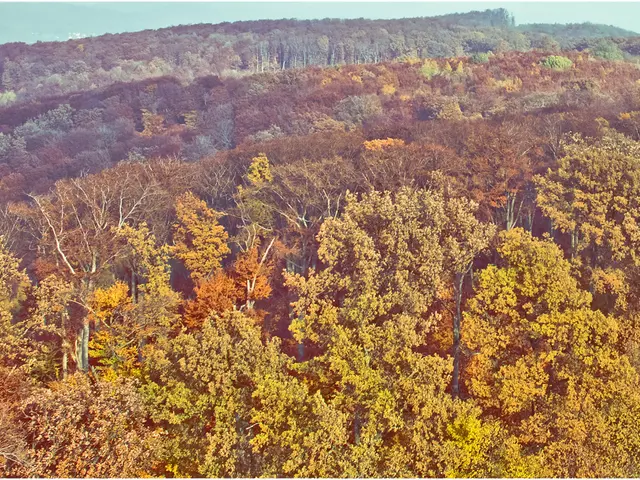Off-Road Tires Unsatisfactory in ADAC Testing: Only One Recommended
No tire, designed for off-road use, can completely persuade or prove its dominance over any varying terrain types.
Going for rugged? All-terrain tires (AT) are the latest craze, commonly fitted to vehicles like campers, SUVs, and pickup trucks. But how do they hold up? That's what the ADAC wanted to know, and they tested eight popular AT tires against a passenger car all-season tire with a snowflake symbol.
The results? Less than satisfying. On paved surfaces, these off-road tires are not a good choice, according to the automobile club. The catch? Most of these tires spend the majority of their lifespan on paved roads, which could compromise road safety.
- None of the tested tires receive a "good" rating from the ADAC.
- The results on dry and wet roads are disappointing.
- The biggest flaw of the models in the test is their braking behavior on wet roads.
These tires also show deficiencies in handling and aquaplaning behavior. Only on snow-covered tracks can two tires at least approach the reference tire (a passenger car all-season tire) running out of value - a rating of 2.1. On gravel, some models can nearly match or overtake the car tire.
The Top Performers Manage a "Satisfactory" Rating
While none of the test tires are recommended, four are deemed "satisfactory." Three tires are at least "sufficient," and one model fails as "defective." The winner is the Yokohama Geolandar A/T G015, with an overall rating of 2.9. Also "satisfactory" are the Falken Wildpeak A/T3WA, the General Tire Grabber AT3, and the Matador MP72 Izzarda A/T2.
So, what should you do? Those who only occasionally drive off-paved roads are safer with high-quality all-season tires, according to the ADAC. All-terrain tires can be beneficial for off-road enthusiasts with four-wheel drive, but they should be chosen carefully. The club advises interested parties to find models with well-balanced strengths and weaknesses among the four "satisfactory" models.
The ADAC tested popular all-terrain tires, including the BF Goodrich All-Terrain T/A KO2, Bridgestone Dueler A/T 002, Falken Wildpeak AT3 W/A, General Grabber AT3, and Loder AT1. These off-road tires are rugged and designed for winter certification (3PMSF rating), but they typically have poorer wet and dry road handling precision compared to specialized all-season tires due to their aggressive tread pattern.
On the other hand, all-season tires like the Michelin CrossClimate 2 offer excellent dry and wet handling as well as superior traction in light snow. The Michelin CrossClimate 2 is a preferred choice for mostly paved driving with occasional light snow, providing better overall comfort, safety, and performance. For mixed on- and off-road usage, especially when significant off-road capability and winter readiness are needed, top all-terrain tires are preferable.
- It's important to note that off-road tires, such as the ones tested, are not manufactured from materials used for the products they aim to replicate, like the tires used on regular passenger cars.
- The automotive industry, including tire manufacturers, should consider the industry's reliance on paved roads as a significant factor in the design and manufacture of all-terrain tires to ensure optimal road safety.
- Finance, transportation, and sports industries might benefit from using specialized all-season tires like the Michelin CrossClimate 2 instead of all-terrain tires for their vehicles due to their superior performance on mixed road conditions.









